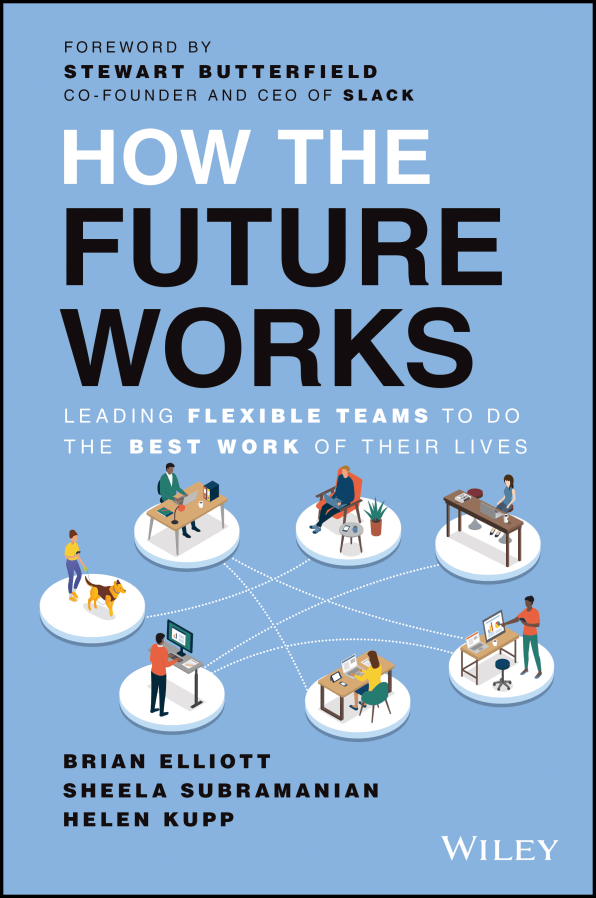- | 3:00 pm
Why the 9-to-5 schedule has lost its place in the workplace
The idea of a causal relationship between time and output is feeling increasingly outdated.

The old adage that “time is money” goes way back. It’s typically credited to Benjamin Franklin, and it describes the long held belief that more time spent working equals more success. And that may have been true at one time, for some anyway. In the agricultural era, more time in the fields meant more crops getting planted or harvested (of course, that only worked for the owner of those crops or those being paid by the hour or bushel to work the fields, rather than slave labor or indentured servants). Even still, much agricultural work was unlikely to continue after sundown and it’s often seasonal, unlike what took root during the Industrial Revolution when a large part of the labor force moved from field to factory to work on a set daily schedule.
As journalist Celeste Headlee, author of Do Nothing: How to Break Away from Overworking, Overdoing, and Underliving, put it: “Before the industrial age, time was measured in days or seasons. However, when workers began punching in and out of work, our understanding of time changed, as did our enjoyment of our time off.” If people got time off at all, that is. Shifts in factories and mills could sometimes last for ten, twelve, even fourteen hours a day, leaving little time to do much else but eat, sleep, and get ready for another day of work (a notion that may not seem all that unfamiliar to many working today).
Labor movements grew in power in reaction to strenuous conditions, but it was more than just workers who saw the need for change. In the 1920s, automobile titan Henry Ford found business reasons to impose limits on working hours. As someone who kept a close eye on efficiency, he noticed that when employees worked too many hours, they made mistakes and productivity suffered. As a result, he imposed restrictions: eight-hour days, five days a week. He wasn’t the first to do this, but he deserves credit for bringing attention to the concept. “We know from our experience in changing from six to five days and back again that we can get at least as great production in five days as we can in six,” he said. “Just as the eight-hour day opened our way to prosperity, so the five-day week will open our way to a still greater prosperity.” Still, it wasn’t until the next decade, in 1938, that President Franklin D. Roosevelt signed the Fair Labor Standards Act limiting working hours for all workers.
It was during that Industrial Era that the concept of work became so tied to measures of time and output, to the point where they were seemingly inseparable. Management practices followed suit, with leaders relying on things like punch cards and monitoring practices to make sure workers were putting in their time and churning out product.

How The Future Works: Leading Flexible Teams To Do The Best Work Of Their Lives by Brian Elliott, Sheela Subramanian, Helen Kupp
Many of these ideas persisted even as work changed considerably. In the mid-twentieth century, many workers moved again, this time from the factory to the office, but, like the field or factory, there was still a central location where work had to get done—that’s where the files and equipment (typewriters, switchboards, fax machines) that enabled work were located, as well as the people you needed to collaborate with to get your work done.
Even today, most of us still think of the workday as some variation of 9-to-5 and the workweek as Monday through Friday. Bosses often expect to see their employees in the office at a certain hour and take note of when they leave (pre-pandemic, at least). This has largely remained true even though, thanks to a slew of new technological tools, the kind of knowledge work that drives much of today’s economy doesn’t need to be done from anywhere in particular, or during any particular hours. Many of us no longer have to show up in the field where the crops are in order to do our work, or in the factory to assemble widgets, or in an office to connect with colleagues and clients. In fact, the idea that we would wait until we get into the office at 9:00 a.m., or have a hard stop when we leave at night, went away quite some time ago for most of us (if we ever experienced it at all), when our laptops and smartphones started allowing us to carry work home with us in our bags or pockets. 9-to-5 is a concept that just doesn’t resonate with most knowledge workers today.
It seems that so much of how we work has changed over the past few decades, and yet so much hasn’t. Concepts like presenteeism, clock-watching, and employee monitoring are all still widely practiced in companies across industries, and rarely have we stopped to wonder whether these old habits and expectations still make sense. (Spoiler alert: they don’t, as you’ll see throughout this book.) Then along came COVID-19, which shut down offices across the globe, and suddenly we couldn’t avoid it any longer: We had to take a closer look at the way we work and ask whether it was possible to do things differently—and maybe even in a better way.
As anthropologist, James Suzman, wrote in his exploration of how the concept of “work” has evolved throughout the ages: “By recognizing that many of the core assumptions that underwrite our economic institutions are an artifact of the agricultural revolution, amplified by our migration into cities, frees us to imagine a whole range of new, more sustainable possible futures for ourselves, and rise to the challenge of harnessing our restless energy, purposefulness, and creativity to shaping our destiny.”
In other words, if the way we work is rooted in old norms, what’s stopping us from changing, and from doing things in a new and better way?
Excerpted with permission from the publisher, Wiley, from How the Future Works: Leading Flexible Teams to Do the Best Work of Their Lives by Helen Kupp, Brian Elliott, and Sheela Subramanian. Copyright © 2022 by Brian Elliott, Sheela Subramanian, and Helen Kupp. All rights reserved. This book is available wherever books and eBooks are sold.






































